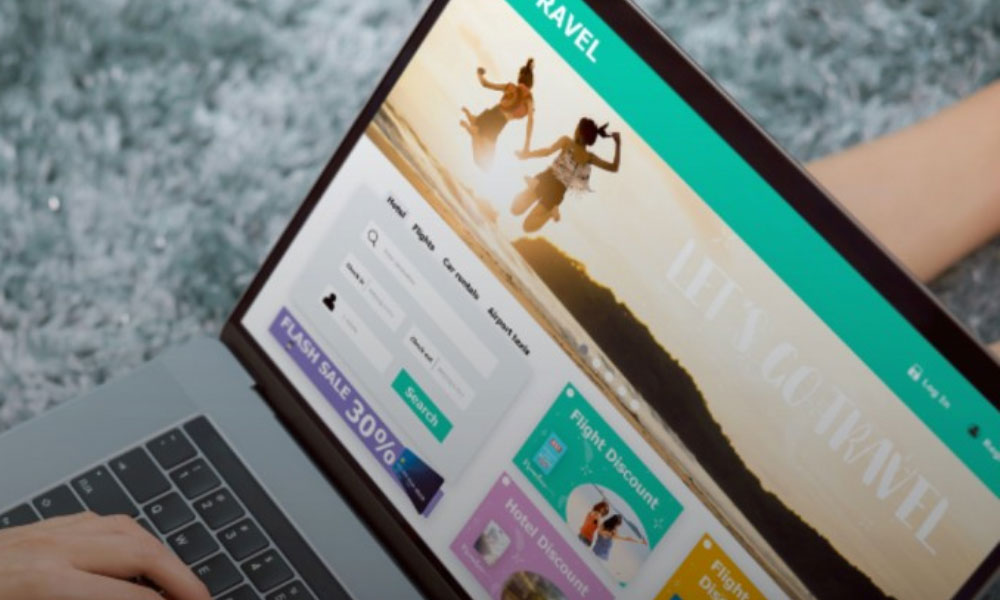How to Use Website Visuals to Shape Brand Perception
Once you’ve determined how you want prospects to see your brand and have all the elements in place to shape their perception, it’s time to start implementing visual branding strategies to reach your goals.
- Use Consistency in Your Typography and Colours
Staying true to your brand’s visual identity is crucial as consumers take an average of eight touches to convert from awareness to conversion. To make your audience remember your business, develop a recognisable visual identity using colours and typography.
The right palette and font can instantly become synonymous with your organisation. This visual branding strategy doesn’t require being an international company or designing a globally recognised logo. Just choose a visual theme for your business and stick to it to profit from brand familiarity. For example, Digestive Warrior uses a unique shade of magenta for its logo, site elements, and CTA buttons, making it the brand’s calling card. This stands out in a saturated market with green, white, and blue logos aiming to evoke dependability or nature.
- Make Use of Realistic Images Based on a Particular Theme
Visuals are powerful tools for conveying messages and influencing audience perception. However, it’s essential to avoid generic images like stock photos and instead use visuals that relate to the solutions your brand offers, create an emotional connection, and bring authenticity to your online presence. Key One Realty Group’s website uses a hero section with short clips representing properties managed by their team to set expectations and encourage prospects to explore their offerings.
A user-centric approach can also be used to select website visuals. Use the hero image on the homepage to represent audience pain points or authentic user imagery. For example, amateur astronomy site Love the Night Sky uses website visuals to showcase the aspirational lifestyle their solutions unlock for customers. By using visuals effectively, you can shape audience perception and grow your brand.
- Understand the Importance of Negative Space
Web visuals significantly influence the perception of a business and its willingness to invest in its solutions. However, it is crucial not to overwhelm visitors with too many visual elements. Visual hierarchy plays a significant role in effectively communicating a message or positioning the business. To make a lasting impression, high-value webpage elements should be surrounded by negative space, as it speaks loudly and can guide visitors’ attention.
For example, on Startup Resources’ homepage, negative space guides visitors’ attention towards the brand’s value proposition, maximising conversions through the lead capture element. This unwavering focus on Startup Resources’ offerings establishes and cements the brand’s identity in the reader’s mind.
On Lucky Orange’s homepage, negative space is used to remove distractions from the benefits section, maximising prospects’ chances of concluding the solution is worth an investment and perceiving the brand as competent enough to address their pain points. By utilising negative space effectively, businesses can communicate their message and position their business effectively.
- Rely on Badges and Illustrations to Boost Credibility
Brand trust is crucial for attracting customers and boosting business growth. Website visuals can help prove a brand’s credibility by adding badges or illustrations to existing designs. Showing trust elements on the homepage, such as product ratings, media mentions, or third-party certifications, can influence visitors to view the business as reliable and competent.
Social media management brand Sprout Social employs this strategy, emphasising its 2024 G2 Best Overall Software category win and showcasing the logos of prominent clients like HP, UNICEF, and Campbell’s. This approach helps build credibility and increases the likelihood of converting leads into customers.
- Experiment with Multimedia and Interactivity
To capture and retain prospects’ attention, it is essential to encourage engagement with your content through interactive and multimedia website visuals.
A 2022 study by Mediafly found that interactive content attracts 94% more views and 52.6% more engagement than static content. To ensure web visitors remember and notice your brand’s message, consider adding movement to your visuals. For example, Vivion’s homepage presents its unique value propositions in a carousel format, while BetterHelp’s header encourages visitors to choose the type of therapy they want to try before presenting any other written or visual content. Video content is another powerful format for businesses to explain their products, boost brand awareness, and encourage conversions. However, it is crucial to consider page load speed when using video and take measures to speed up the page, such as using a CDN and embedding video hosted on another platform.



No Comments